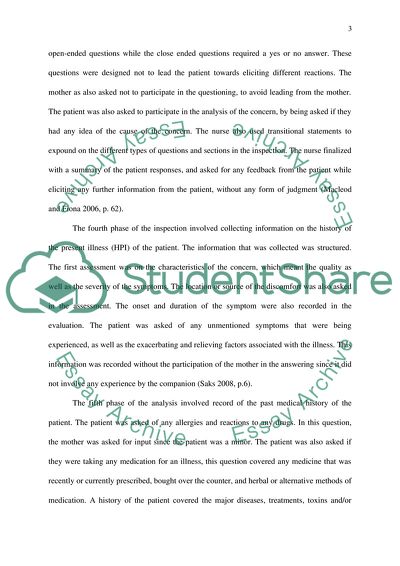Cite this document
(“A Reflective account relating to a 14 year old female patient ( Essay”, n.d.)
A Reflective account relating to a 14 year old female patient ( Essay. Retrieved from https://studentshare.org/nursing/1648832-a-reflective-account-relating-to-a-14-year-old-female-patient-complaining-of-painful-urination-uti-focusing-on-a-patient-centred-structured-consultationhistory-taking
A Reflective account relating to a 14 year old female patient ( Essay. Retrieved from https://studentshare.org/nursing/1648832-a-reflective-account-relating-to-a-14-year-old-female-patient-complaining-of-painful-urination-uti-focusing-on-a-patient-centred-structured-consultationhistory-taking
(A Reflective Account Relating to a 14 Year Old Female Patient ( Essay)
A Reflective Account Relating to a 14 Year Old Female Patient ( Essay. https://studentshare.org/nursing/1648832-a-reflective-account-relating-to-a-14-year-old-female-patient-complaining-of-painful-urination-uti-focusing-on-a-patient-centred-structured-consultationhistory-taking.
A Reflective Account Relating to a 14 Year Old Female Patient ( Essay. https://studentshare.org/nursing/1648832-a-reflective-account-relating-to-a-14-year-old-female-patient-complaining-of-painful-urination-uti-focusing-on-a-patient-centred-structured-consultationhistory-taking.
“A Reflective Account Relating to a 14 Year Old Female Patient ( Essay”, n.d. https://studentshare.org/nursing/1648832-a-reflective-account-relating-to-a-14-year-old-female-patient-complaining-of-painful-urination-uti-focusing-on-a-patient-centred-structured-consultationhistory-taking.


